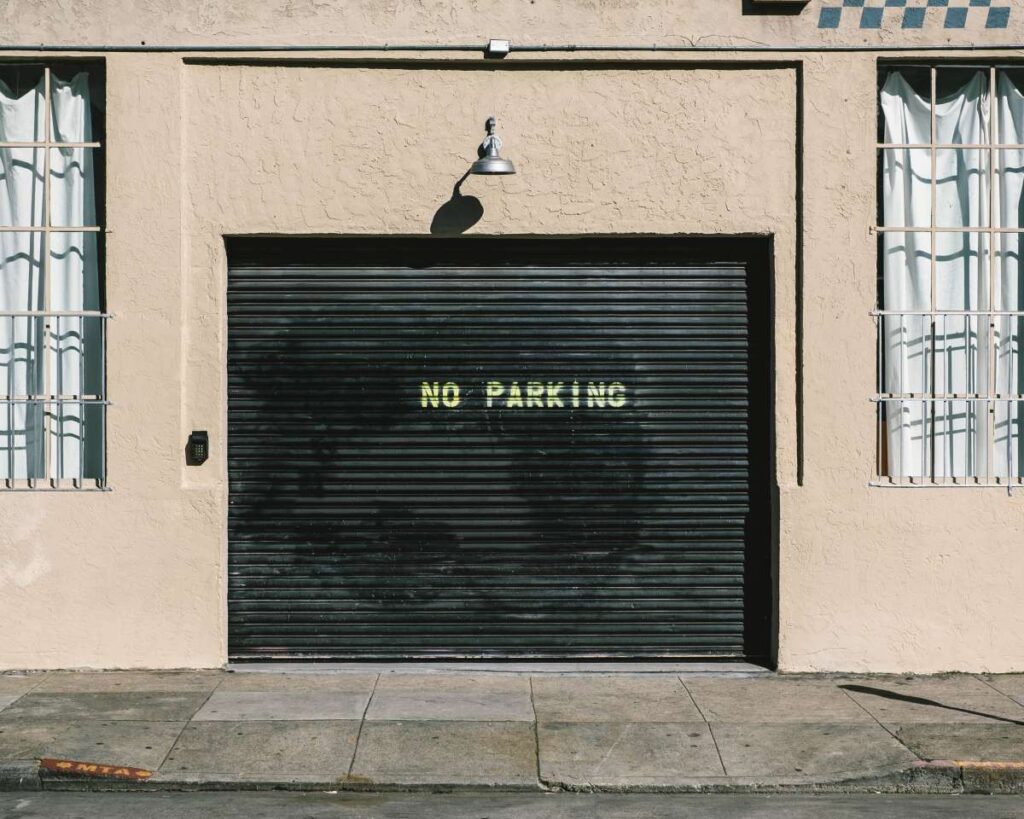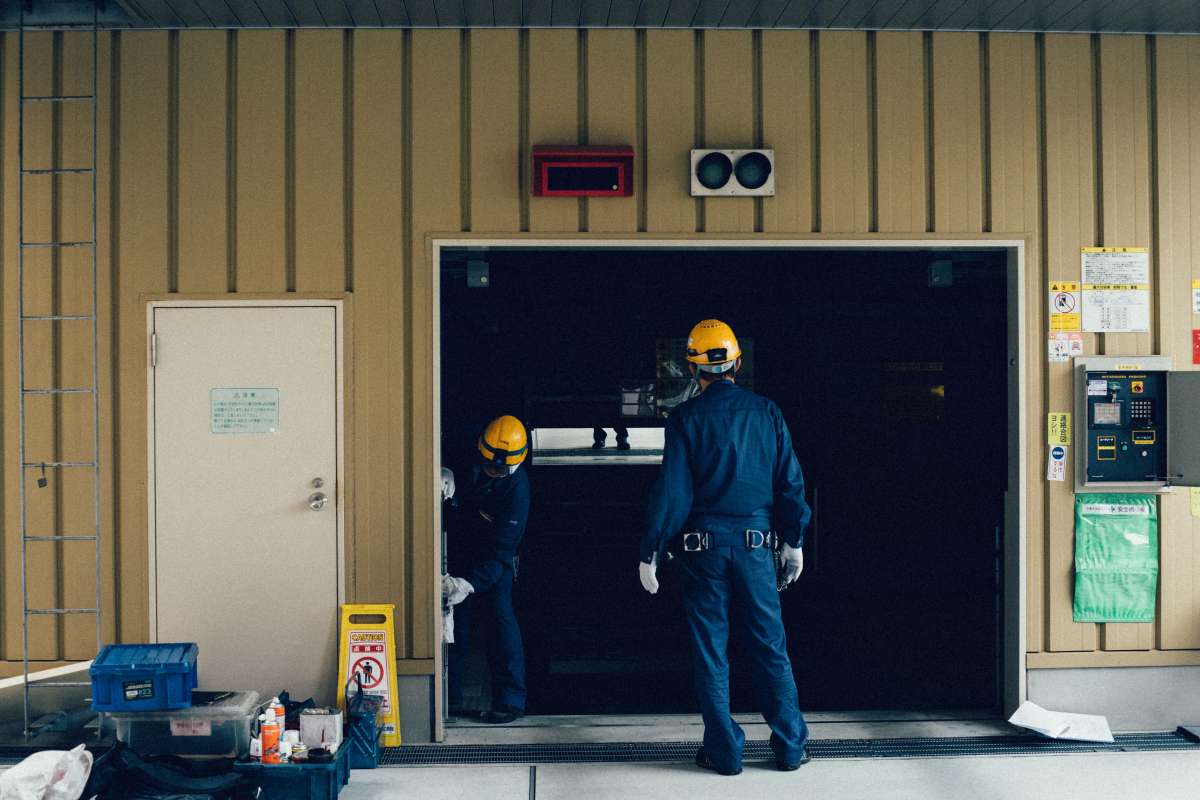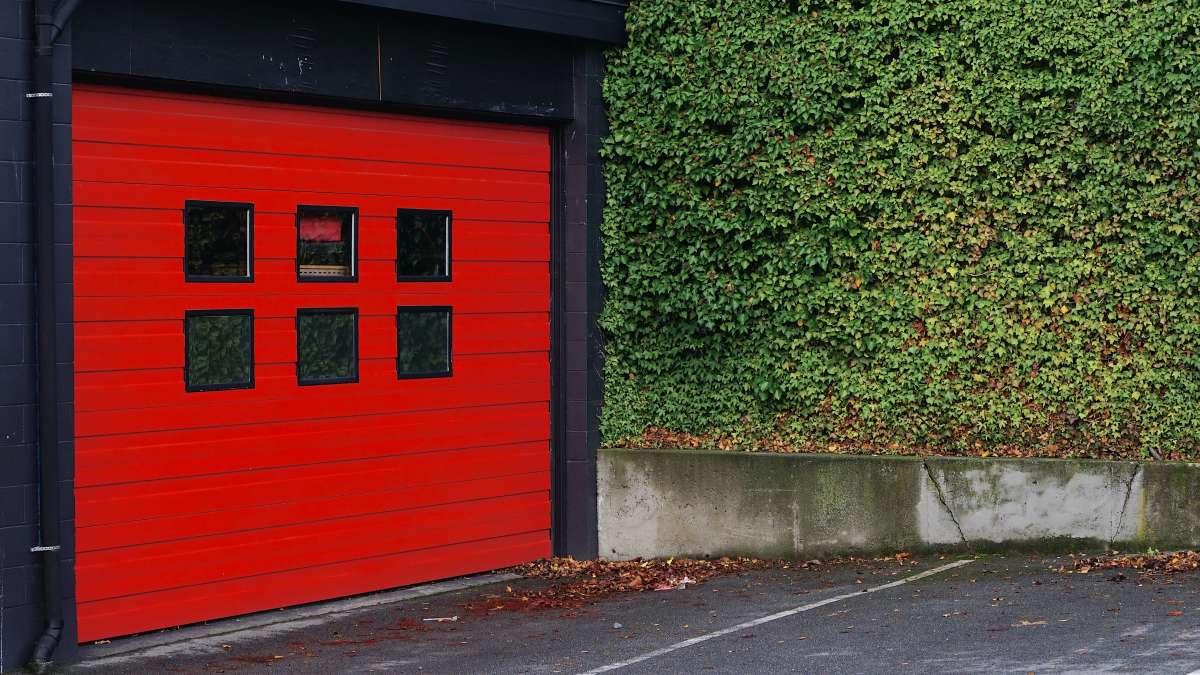Garage door sensors are surprisingly simple devices. They detect when the garage is closed, turn off the light, stop the alarm from sounding, and automatically close any open doors. That’s it! But can they go wrong?
This article will discover some of the most common issues that cause a garage door sensor malfunction. Garage Storage Solutions features an innovative wall system with heavy-duty sliding wall components such as hooks, garage shelving and stylish, durable steel cabinets designed to hold your gear securely and neatly in place.
How To Tell If Garage Door Sensor Is Bad
It’s not always clear if a garage door sensor is wrong, but a few common signs indicate you have a malfunction.
Let’s start with the most obvious sign – your garage door doesn’t close properly. If you discover this problem, the sensor path is the first thing you should check, as any objects blocking the way will prevent the door from closing.
This is a standard garage door safety feature that prevents injury and damage to personal belongings. Other signs include flashing garage door opener lights, missing sensor lights, or flashing sensor lights.
Okay, now that you know some of the common signs of garage door sensor malfunction, you’re ready for the next step – troubleshooting.
Here’s how to tell if the garage door sensor is terrible – five things to check:
- Sensor path
- Sensor power
- Sensor lenses
- Sensor moisture
- Sensor alignment
- Sensor wear & tear
Keep reading for more detail, starting with the first thing you should check.
Sensor Path – Make Sure Nothing Is Obstructing The Sensor Beam
In general, garage door sensors block the door from closing if there is an object nearby.
This precaution ensures that the door doesn’t close when your car is in the doorway. The exact mechanism kicks in when other objects are placed near the door too.
Sensor Power – Reconnect The Sensor To Its Power Supply
A common cause of a malfunctioning garage door sensor is a lack of power supply. So look for small LED lights on the sensors.
If they’re turned on in both the sensors, there is no issue with the power supply. However, if you find the lights turned off in one or both the sensors, it indicates a problem with the power supply.
Sensor Lenses – Give Sensor Lenses A Good Cleaning
Sometimes, door sensor lenses can be covered in dirt. This happens when you don’t clean the lenses often if you live close to an intersection or with a lot of wind and pollution near your home.
All this leads to the pile-up of dust on your lenses, and it is likely to block the sensor from functioning correctly.
Sensor Moisture – Dry Sensors If Wet
Sometimes, wetness in and around the sensors is a possible cause of the malfunction. This is likely if your sensor was exposed to rain or water from the sprinkler system.
Sensor Alignment – Make Sure Both Sensors Line Up With Each Other
When both the sensors are misaligned, they will not work correctly. First, check if this is the cause by looking at the LED lights on both the sensors.
You should use green lights if this is not the cause. When you see red lights flashing one, or lights off in another, check for the alignment.
Sensor Wear & Tear – Check For Damage
Sometimes, the problem can be due to normal wear and tear. This is especially true if you’ve been using the same sensor for more than ten years.
Now that we’ve seen the possible causes let’s see how to troubleshoot them.
Troubleshooting
Here are some simple troubleshooting options that should fix the problem for you.
Check if any objects are impeding the door. For example, sweep the garage floors and look through the sidings to ensure no objects obstruct the entrance.
Since the lack of power supply is a common problem, check the wires around the sensor when the LED lights are not flashing.
Many times, the malfunction can be due to a loose connection or broken wire.
An excellent way to check for power connection is to check if other parts of the garage are getting power.
This makes it easy for you to isolate the problem. For example, if the cause is an unsatisfactory power connection, open the box and check for links, but make you exercise extra precaution.
If you’re not sure where to get started, a professional can help. First, get a 25-point garage door inspection to ensure your garage door is safe and working correctly.
Even if there are no evident signs of dust on your sensor’s lenses, it is still a good idea to wipe the lenses down with a dry, clean and lint-free cloth.
Check if the alignment is proper, and adjust as needed to make sure they are both facing each other.
Sometimes, wet patches around the sensors are the cause of the malfunction. If you notice any wetness, do nothing. Just allow the water to dry up and try opening your garage door. It should work now.
If none of these troubleshooting options works, look at the garage door sensor’s manual and see if there is anything in it that can help you fix the issue.
Your final option is to get in touch with a garage door expert to fix the problem for you.
Sometimes, the sensor may be beyond repair due to wear and tear, and in such a case, your best bet is to replace the garage door sensor with a new one.
The latest garage door sensors are technologically advanced and even allow you to control the opening and closing through an app on your smartphone. This is something to consider if you decide to replace your garage door sensor.
Reasons Why Garage Door Sensor Not Working
The Garage Door Won’t Close.
The first sign that something is wrong with your sensor in the garage is the garage door malfunction.
If the door opens without problems but has difficulties in closing, something is wrong. Another option is that the door closes but reopens immediately.
In both cases, something interferes with the sensors, and they react as if there is an obstacle between them.
That is why the door reopens to prevent an accident that can damage an object or injure the person under it.
There are several reasons why the garage door doesn’t open and close appropriately. Firstly, you should quickly check if there is a problem with the sensors. One of the simplest ways is to test them with a few cardboard boxes.
Cardboard Box Test
You should take a few cardboard boxes and place them under the open garage door to check if the garage door sensors work correctly.
Since the sensors are about 6 inches (15 cm) away from the ground, you should choose boxes higher than that.
Now, you can try to close the garage door. If the sensors are in alignment and function properly, the boxes should interrupt the beam of light between them, and the door remains open. Another option is for the door to start closing but then open before touching the boxes.
However, if the garage door sensors are wrong, the door won’t stop until reaching and damaging the boxes.
It is possible that the door entirely closes as if there are no boxes and destroys them. Additionally, it can close partially and reopen after hitting the bins. In both cases, the sensor security function has failed.
If the door destroys the boxes when it closes, switch to manual operation. Since there is no way to predict whether and how the door can slam without registering small obstacles, children, and pets, you should shut the garage door and don’t use the garage until solving the problem. That way, you will avoid possible accidents.
The Photo-eye Sensor Lights
The photo-eyes sensors on the door’s track are approximately 6 inches (15 cm) above the ground. One sensor has a green and the other a red LED light.
A green light on the sensor sends a beam of light, while a red light indicates that it receives it.
If something is wrong with the sensors, one of these two lights goes out or blinks. That usually means something interrupts the light signal between them, or sensors are not on the same level. In both cases, they can’t perform their function correctly.
If the red light flashes and the green one works without problems, the sensors are not in alignment.
It would help if you realigned them by moving them slightly until the moment both lights are on.
However, you should check whether you have a problem with the sensors only in a specific part of the day.
Sometimes the sun causes problems with sensors. For example, if the sun’s rays fall at a certain angle on one of the sensors, they will interfere with the beam of light and cause malfunction.
A simple solution is to shield the sensors from the sun’s rays by placing cardboard in front of them.
Always put the cardboard carefully so that it doesn’t interfere with the signal between the sensors. Otherwise, you can only replace one problem with another.
Sensor Lenses
If you live on a busy street and the garage door is often open, dust and dirt will accumulate on the sensor lenses daily.
As they are pea-sized, they quickly get dirty over time and stop sending the signal necessary to close the door.
You can quickly establish a blocked signal as soon as you wipe and carefully clean the sensor lens.
Take a broom, remove the cobweb around the garage door, and then use a soft cloth to remove the accumulated dust.
Repeat the test with the cardboard boxes to make sure that you have solved the problem. Next, you need to check if the sensors have an uninterrupted signal so that the door opens and closes as before.
Besides, excessive humidity can interfere with sensor operation. For example, if you live in a rainy area, you can expect tiny drops of water to penetrate the sensor.
First, wipe the sensors with a dry cloth on the outside. Then, unscrew the metal holders and check if they are wet on the inside.
Another reason for moisture in the sensor’s lens can be lawn sprinklers. If you place the sprinklers too close to the garage, water can cause the problem. Solve it by moving them so that not a single drop can reach your garage door. Be sure to find smart garage shelving solutions when packing and storing your belongings. From a simple, one-room project to a cross-country move, a professional organiser like Garage Storage Solutions can help to make your life easier.
Sensor Power Supply
The green light on the sensor always shows that there are no problems, and everything is fine with the power supply.
If both lights on the sensors are off, you will know that sensors have no power and can’t respond.
You should also check if the cable is unplugged so the garage door doesn’t close. The fuse can blow due to voltage drop, or a power outage occurs. Once the power supply is established again, the sensors will become operational again.
Sensor Wire Damage
One of the most severe problems with sensors on garage doors is wire damage. Depending on the garage door model, a sensor that flashes orange instead of the regular red light may indicate this issue.
Carefully inspect all wires leading from the sensor to the terminal on the back of the opener. If the wires are tangled, unweave them and check if any of them is broken or twisted.
Sometimes, you can spot a staple or a nail cut through the wire insulation. All the wires need to be intact for the door to work correctly, and you need to connect them properly to the garage door opener.
Keep in mind that you should connect the white wires to the white terminal and the black and white wires to the grey terminal.
If you spot that wires are wrong or broken, you should call an electrician to solve the problem. Of course, you can fix the sensing wiring yourself, but only if you are skilful enough.
Otherwise, incorrectly connected wires may result in electric shock. Besides, there can be significant malfunctions of the garage door opener, which would result in additional costs.
Garage Door Sensor Replacement
When the door doesn’t close persistently, and the sensors don’t light up, it is time to replace them.
Clean them thoroughly and then check the wiring once again. If the problem still exists, the safest solution is to install new sensors.
On average, the price of the new sensors is from $75 to $90. Then, however, you need to add the service cost to the final sum.
If you call a professional to install a new pair of sensors, your overall cost will be around $200.
If you decide to replace bad sensors on your own, you need to disconnect the power first. Then, pull the sensors out of their braces and cut the wires near them so that you can connect the replacement ones.
Carefully connect the white wires on the sensor to the cables on the white terminal. After that, you need to attach black and white wires to the grey terminal.
Don’t be surprised if your model has grey wires. If it is the case, it will further simplify the process.
Slide back both sensors into a metal bracelet and screw them on. When you plug back the garage opener, make sure they align correctly. Don’t forget that one sensor should be green and the other one red.
All you need to do is open the garage door and repeat the test with the cardboard boxes.
If you have done everything right, the garage door will stop before hitting the boxes and reopen right away. That means that you have solved the existing problem, and the garage is safe to use.
How Garage Door Sensors Work
Is your garage door sensor not working? First, it’s essential to understand how garage doors work before trying to fix an issue yourself.
Since 1993, residential automatic garage doors have required safety sensors that prevent the door from closing on a person or object. In addition, every garage door must have sensors to tell if something is in the way before the door closes.
The sensors act as a critical safety feature for automatic garage doors. For example, sensors can reverse the direction of the closing door if they detect an object in the path of the door.
The door will then return to its open position. If the sensors stop working, this creates an inconvenience as well as a serious safety hazard.
How Do You Test A Garage Door Sensor?
Now that you know how garage door sensors work, you can test your sensor’s functionality. Determining if your garage door sensor is terrible is pretty straightforward.
Once you determine that the sensors are the issue, the solution is often simple enough to perform yourself.
To test your garage door sensor, you will need an ordinary everyday object like a cardboard box.
Place the box in the line of the sensors and try to close the garage door. If the door reverses after sensing an obstruction, your door is functioning correctly. However, if the door closes on the box, you will want to troubleshoot and look for signs to determine what is wrong with the sensors.
Signs To Look For
If your garage door sensors are faulty, you can troubleshoot to identify the root cause. There are a few signs that can help you determine the underlying problem with a garage door sensor.
By checking these, you can decide whether to fix the problem yourself or contact a professional. Look for these three signs:
Light indicators: An easy way to tell if your garage door sensors are out of alignment is by checking if the exterior LED light blinks when you attempt to close the door.
Green lights mean the sensors are working, while red lights indicate the sensors are not aligned. If you see red lights, try inspecting the bracket or tightening a screw on the blinking sensor.
You’ll know you fixed the sensor if the light stops blinking and your garage door closes properly again.
Dirty lenses: Sometimes, fixing your garage door sensors requires just a clean cloth. However, the sensor lenses can fail to operate when dirt or spiderwebs block their view of the garage door opening.
Wiping off the lenses can help your door function as usual. However, if your garage is filthy or your area is known for dust, you will want to clean your sensors regularly.
Damaged wires: The wires responsible for connecting the garage door sensor system can undergo wear and tear due to regular use, weather and even pests. Rain and wind, pest infestations and the use of tools can all affect the wires.
Check to see if the wires have water damage, chew marks or other indications of tampering. If so, you may need to replace them.
After performing these remedies, recheck your garage door with another cardboard box. This test offers an easy way to see if you fixed the problem or if you should call a garage door expert.
Conclusion
Garage door sensors are an essential part of your garage, and any malfunction can impact your safety in a big way.
If you’re unable to resolve the problem, you may need to contact a professional garage door service near you for help. Are you getting frustrated by your clutter and garage organisation? Here at Garage Storage Solutions, we offer extensive professional organising and declutter service.


